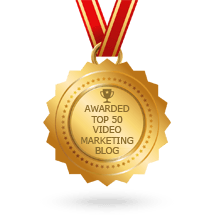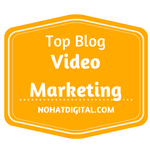In any marketing campaign, establishing or reinforcing a brand identity is vital to ensure that the target audience engages and familiarises itself with your business, the brand and the overall campaign. Guest blogger Ashley Lipman looks at some of the steps to take to build a brand identity for your business.
Calvin and Hobbes is a comic strip written by Bill Watterson, and syndicated throughout the US until 1996. This cartoon was popular, and still has a following. You’ll find references to it throughout pop culture. Watterson was a wise man, but as he developed into the mature cartoonist he became, he learned how to better establish the “brand” of his lead character, Calvin.
Watterson wrote himself into a few “corners” at times when he designed a character or a relationship that didn’t quite fit the “character”—or “brand”—which was the rambunctious Calvin. What Watterson found was that certain story choices made it hard to move Calvin’s character forward. So he learned to be flexible. Certain characteristics of the comic strip had to be eliminated so better ones could be introduced. An uncle was written out of the comic, character designs were revised, etc.
If you want your brand to have the most flexible, effective impact, you’ve got to have a similar mindset. You want to design it for flexibility. You want to find what works, what doesn’t, and re-adjust yourself accordingly. You will experience changes. If you design a brand that isn’t properly flexible, this will be harder.
This is the most basic step you need to figure out how to follow-through on as you develop your brand. There are other steps to consider, though, and this writing will explore a few of them.
Image is core to your brand. The way your logo looks, y our slogan, the colour schemes which define outreach materials, and the kind of values your business represents are all encapsulated under that which may be labeled “archetypal”. If you’re unfamiliar, an archetype is like a “proto” version of something.
our slogan, the colour schemes which define outreach materials, and the kind of values your business represents are all encapsulated under that which may be labeled “archetypal”. If you’re unfamiliar, an archetype is like a “proto” version of something.
It turns out there’s a “proto” human tongue—that is to say: one language from which all others derive. Another example may be a cube. A square would be archetypical of a cube. A circle is to some degree archetypical of a sphere. Your logo and slogan are both archetypal representations of your business.
Nike is a check mark followed by “Just Do It”. Apple computers are named from Macintosh apples, and include a bit of fruit with a bite taken out of it—almost the “forbidden fruit”, if you will. Their slogan is “think different”. Slogan and logos define the brand in microcosm; they’re like the tip of the corporate pyramid which expands out as you “zoom in”.
Well, you need to design your brand such that it communicates what you do in such a way. Marketing, advertisement, the effectiveness of PR, products, services, employees, and management all need to evince that which defines your brand. This will take time, but as you go about facilitating brand alignment in this way, you simultaneously create corporate culture.
Take a look at this resource on how video can help you rank higher | Melbourne Media Consulting that offers some prime information; in a nutshell: video is taking over the internet, relevant and engaging video content which is value-rich will increase your visibility, expand traffic, and has a high likelihood of making you stronger in the market. You’ve just got to go about it right.
in a nutshell: video is taking over the internet, relevant and engaging video content which is value-rich will increase your visibility, expand traffic, and has a high likelihood of making you stronger in the market. You’ve just got to go about it right.
Incorporating visual elements definitely expands the effectiveness of your brand, but you can’t stop here. Because technology is in continual flux, you’re always going to need to have some stake in new options.
AR, or Augmented Reality, is beginning to look as though it will take the place people used to think VR would. Cloud computing, Internet of Things (IoT) tech, and Edge Computing are additionally re-defining the market. Big Data can help you get a real idea of what the market looks like in an almost esoteric sense, allowing you to make more informed optimisation decisions. If you want your brand to be the most effective, it’s essential that you facilitate it by keeping it current in the wake of such tech trends.
Archetypical brand considerations and maximising marketing effectiveness through utilisation of the latest outreach solutions are both means by which you can fortify your brand such that it maintains sustainability.
Apple’s logo and slogan have persisted for decades, the same isn’t true of McDonald’s; who have changed between multiple slogans and outreach strategies over the years. Though that said, McDonald’s has remained profitably effective even in the wake of backlash from the film Supersize Me!, and related social impact. This is because they’re always optimising.
What it’s important for you to do is ensure that you establish early a practice of reinventing, improving, augmenting, and expanding your brand. This is one of the best ways to facilitate sustainability.
A brand optimized for sustainability through flexible transition that’s built in, a brand which understands trends in the marketing world, and one which is archetypically impactful, is likely to retain effectiveness and profitability.
Additionally , such steps will “organically” facilitate a unique corporate culture. Focus on your brand, define what it is, and stick to that. Provided you’ve got augmentation built-in, you’ll always be set to put your best foot forward.
, such steps will “organically” facilitate a unique corporate culture. Focus on your brand, define what it is, and stick to that. Provided you’ve got augmentation built-in, you’ll always be set to put your best foot forward.
Ashley Lipman is an award-winning writer who discovered her passion in providing creative solutions for building brands online. Since her first high school award in Creative Writing, she continues to deliver awesome content through various niches. Ashley runs the major influencer site, the blog frog, that gathers quality blogs from across the web.

Our video marketing blogs have been recognised as one of the Top 50 Video Marketing Blogs on the internet. We hope you enjoy reading them and gain valuable insights into what we do here at CMA Video and show that we’re not just another Birmingham video production company but we do more from animation videos to event filming, video strategy to social media video campaigns.
